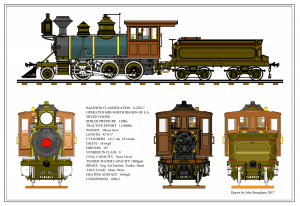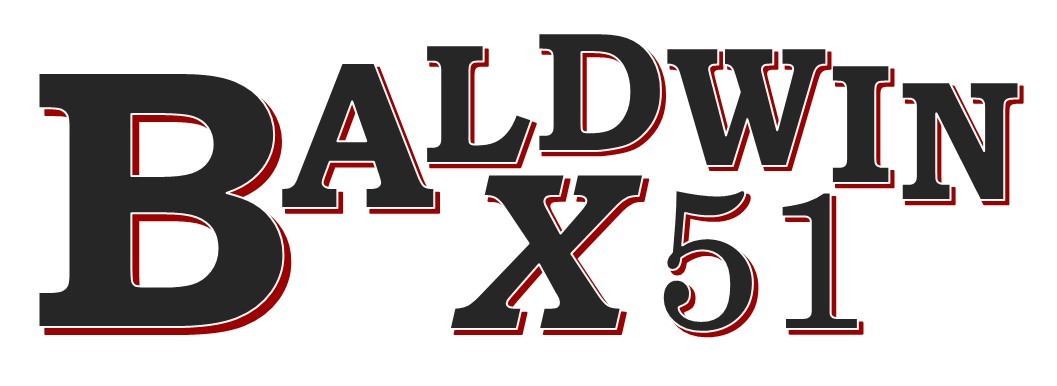History
Twelve locomotives arrived at Port Adelaide aboard the ship John Loghlan in 1881. Four for Broad gauge and eight for narrow. A shipment from Baldwin Locomotive Works in Philadelphia. All were all urgently needed for the development of an expanding railway network across the State. In contradiction to the colonial policy of ‘Buying British’, speed of delivery was essential, and the Baldwin company was the only one who could supply as requested. There were three Ports where the X class was dispatched: Wakefield, Pirie, and Augusta. Whilst there were teething issues to start with, once overcome, they performed well without incident. For more than twenty years they hauled minerals, cattle and wheat goods throughout the narrow gauge network as well as construction trains and shunting duties. They helped in opening up the north of the state to the rest of the country.
Why
As we move into the future, moments in history are often overlooked. Reflecting on the past gives a perspective on our development as a State and Nation. We have a cultural heritage that needs to be uncovered and maintained for future generations to appreciate. Our railway heritage is no different. Often cast aside, it has been much the backbone of many businesses. The X Class locomotives were strikingly different from the British engines in size, looks, and serviceability. Due to their ‘wild west’ look, they were not taken seriously as to the role they played. The locomotives of the time struggled to keep up with the task of generating growth, for the individual and the pioneering communities along the lines. Despite their quaintness, they made a significant impact in their ability to haul loads and speed to carry them. Although they were ‘Kings of the Rails’ for only a few years, they came at a time when needed most. In doing so setting a new benchmark.
Design & Construction
We were fortunate to get hold of a ‘General Arrangement’ drawing, showing in detail, the various parts of the engine. Credit must go to the original draftsman whose skill and accuracy have made the job of recreating individual drawings much easier. Regrettably, there only exists a handful of drawings from the railway archives but grateful for providing help in areas where information was limited. Despite this, we have been able create a complete 3D model of the entire locomotive. From this, we have been able to work up the drawings required to recreate the engine. Ancillary items such as lamps etc. can be purchased from America. The tender has the least amount of information available, but this is an area in which drawings can be sourced elsewhere. We intend to keep the engine as original as possible. Authenticity is important to understanding the operation of the engine as it was in service. It was felt that using a number from a previous engine would be more relevant instead of the next number in the series, as it would be in better keeping with the historical nature of the engine.
Modern techniques of design and manufacture would ensure a greater degree of safety and performance. The boiler would be of the welded type rather than rivetted as it would be simpler, cheaper and easier to manufacture whilst keeping to current standards. Drawings for this have been made and been submitted for compliance to code. The use of the Le Chatelier Water Brake will not be fitted as it is more trouble than it is worth. Fitters of the past often given testimony as to the difficulty in operation and potential damage that it can cause. Eventually they were removed from the engines. The fitting of an air pump for braking is essential for the safe operation of trains. The air brake system did not become available on the narrow-gauge system until the mid 1920’s so retrofitting of a pump would be in keeping if they survived in service until then. One would have to wondered what other changes would have been made if they lasted a bit longer. The construction of the engine would be completely Australian made, and, as much as possible, here in South Australia. Adelaide is fortunate to have local industries that have the ability to make part or whole sections of this engine. As well as individuals who have the experience in this area who could offer support in bringing this project to fruition.
Marketing & fundraising
It must be noted that there are no other locomotives of this type in the country. Due its stylized design it would stand out as a unique feature representing South Australia’s past. Here is a way industry, education and the individual can benefit by being part of this unique venture. The attractiveness of this engine would create a focal point from both local and overseas interests. It would become one of the increasing numbers of ‘steam engines of the 21st century’. It has the ability be marketed in numerous locations, media in all its forms would capitalize on its potential.
A project such as this does not come cheap. It has been estimated at around four million dollars. There are areas where costs can be reduced and managed. Its not until a part is to be manufactured that a true cost can be evaluated. When it does, there are various systems proposed to be put into place to bring it into being. Such as sponsorships, one off and monthly donations, event fundraising drives, pledges, grants and syndicates.
At the moment we are in negotiations with various groups and industries who could partner with us on this project. This is a multifaceted construction in which parties both great and small are welcome to participate. Here’s an area of an opportunity for Model Engineers, who are looking to challenge their skills by making various components for the engine. Everyone can have a part.
We ask that if you have any information or wish to be involved, please email us at: BaldwinX51@outlook.com

